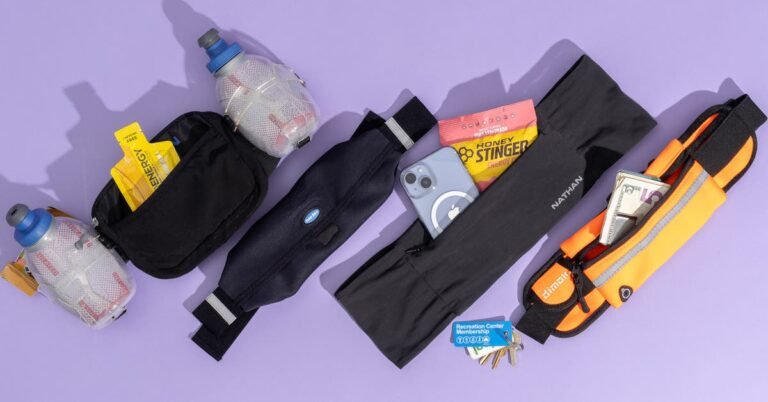In a 1977 interview for an issue of Design Quarterly (PDF), Julia Child said, “Living in an apartment with a small cramped kitchen is no excuse for not cooking good food.” Nevertheless, kitchens that lack ample work and storage space are the most challenging to cook in. Since the size and layout of every kitchen is different—some lack sufficient wall space, while others are short on drawer or cupboard space—we did our best to find items that would work for various configurations, and we focused on a few guiding principles.
Think about your kitchen in terms of basic zones: Loosely dividing your kitchen into zones makes it easier to figure out where your tools and equipment should be stored. “Zoning isn’t cookie cutter, and that’s what’s so great about it. It’s really about where things are naturally placed in the home that you can’t move,” said Faith Roberson. In other words, the arrangement of your stove, fridge, and sink determines how you organize your tools and equipment. Here are the five main areas we thinking about when organizing your kitchen:
- a food prep zone for cutting boards, mixing bowls, measuring cups and spoons, and knives
- a cooking zone for handheld cooking tools, pots, pans, baking pans, and spices
- a food storage zone for pantry items
- a non-food storage zone for dinnerware, servingware, cups, stemware, and flatware
- a cleaning zone for cleaning products, hand towels, and trash
If you have an exceptionally small kitchen, you’ll have to be creative. You can be flexible depending on the activities taking place in the kitchen. For instance, the counter space you’ve established as your prep area for chopping vegetables may double as a place to dry dishes.
Take stock of what you need: Be realistic about the items in your kitchen. Donate food and equipment you never use to make space. Chef Janet Crandall’s main advice is to “stick with the basic tools,” such as a few good-quality knives and only the essential cooking equipment.
Take advantage of vertical space: As Ann Sullivan told us, “Most people always think of organizing in terms of square footage, and I say lay on the ground and look up and look at all the extra space you might have.” Hang as many items as you can on the wall to free up cluttered cupboards and drawers. Take advantage of the areas above your fridge and cupboards if you have them, and maximize cupboard space by using shelf risers and over-the-door hooks or baskets.
Consolidate: Use items already in your kitchen to contain smaller items. For instance, measuring cups and measuring spoons nest nicely in mixing bowls. Also, choose dual-purpose items whenever possible—a large mixing bowl, for instance, can double as a serving bowl for salad or pasta.
Move things out of the kitchen: Move items that don’t pertain to cooking, such as medicine, first aid kits, and tools. Also move kitchen gear you use less often into cupboards or out of the kitchen altogether. Stemware, liquor, and wine bottles hog a lot of space, so try stowing them on a bar cart elsewhere. Likewise, cookbooks are bulky and better off on a bookshelf. And don’t be like Sex and the City’s Carrie Bradshaw—avoid storing anything other than pots and pans in your oven. “I’ve had clients who’ve had fires, it’s not good,” Sullivan said.
Avoid buying in bulk: Several of our experts said to avoid buying in bulk if you don’t have the space for it. A good rule of thumb is to keep only what you need for one or two weeks. Crandall said, “Shop for perishable items in amounts that you will use,” which simultaneously helps save space and cuts down on food waste.
This article was edited by Gabriella Gershenson and Marguerite Preston.
Source link
[og_img
In a 1977 interview for an issue of Design Quarterly (PDF), Julia Child said, “Living in an apartment with a small cramped kitchen is no excuse for not cooking good food.” Nevertheless, kitchens that lack ample work and storage space are the most challenging to cook in. Since the size and layout of every kitchen is different—some lack sufficient wall space, while others are short on drawer or cupboard space—we did our best to find items that would work for various configurations, and we focused on a few guiding principles.
Think about your kitchen in terms of basic zones: Loosely dividing your kitchen into zones makes it easier to figure out where your tools and equipment should be stored. “Zoning isn’t cookie cutter, and that’s what’s so great about it. It’s really about where things are naturally placed in the home that you can’t move,” said Faith Roberson. In other words, the arrangement of your stove, fridge, and sink determines how you organize your tools and equipment. Here are the five main areas we thinking about when organizing your kitchen:
- a food prep zone for cutting boards, mixing bowls, measuring cups and spoons, and knives
- a cooking zone for handheld cooking tools, pots, pans, baking pans, and spices
- a food storage zone for pantry items
- a non-food storage zone for dinnerware, servingware, cups, stemware, and flatware
- a cleaning zone for cleaning products, hand towels, and trash
If you have an exceptionally small kitchen, you’ll have to be creative. You can be flexible depending on the activities taking place in the kitchen. For instance, the counter space you’ve established as your prep area for chopping vegetables may double as a place to dry dishes.
Take stock of what you need: Be realistic about the items in your kitchen. Donate food and equipment you never use to make space. Chef Janet Crandall’s main advice is to “stick with the basic tools,” such as a few good-quality knives and only the essential cooking equipment.
Take advantage of vertical space: As Ann Sullivan told us, “Most people always think of organizing in terms of square footage, and I say lay on the ground and look up and look at all the extra space you might have.” Hang as many items as you can on the wall to free up cluttered cupboards and drawers. Take advantage of the areas above your fridge and cupboards if you have them, and maximize cupboard space by using shelf risers and over-the-door hooks or baskets.
Consolidate: Use items already in your kitchen to contain smaller items. For instance, measuring cups and measuring spoons nest nicely in mixing bowls. Also, choose dual-purpose items whenever possible—a large mixing bowl, for instance, can double as a serving bowl for salad or pasta.
Move things out of the kitchen: Move items that don’t pertain to cooking, such as medicine, first aid kits, and tools. Also move kitchen gear you use less often into cupboards or out of the kitchen altogether. Stemware, liquor, and wine bottles hog a lot of space, so try stowing them on a bar cart elsewhere. Likewise, cookbooks are bulky and better off on a bookshelf. And don’t be like Sex and the City’s Carrie Bradshaw—avoid storing anything other than pots and pans in your oven. “I’ve had clients who’ve had fires, it’s not good,” Sullivan said.
Avoid buying in bulk: Several of our experts said to avoid buying in bulk if you don’t have the space for it. A good rule of thumb is to keep only what you need for one or two weeks. Crandall said, “Shop for perishable items in amounts that you will use,” which simultaneously helps save space and cuts down on food waste.
This article was edited by Gabriella Gershenson and Marguerite Preston.
Small Kitchen Ideas: The Best Ways to Create More Space
[title_words_as_hashtags



